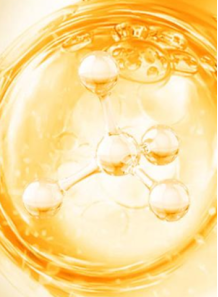HyaRetin™ (Sodium Retinoyl Hyaluronate, Encapsulated Retinoic Acid)
- Product Code: 125422
solves the problem of instability nature of Retinoic Acid by encapsulating Retionic Acid in Hyaluronic Acid
solves the problem of instability nature of Retinoic Acid by encapsulating Retionic Acid in Hyaluronic Acid
HyaRetin™ (Sodium Retinoyl Hyaluronate) solves the problem of instability nature of Retinoic Acid by encapsulating Retionic Acid in Hyaluronic Acid.
The research found that not only the active ingredient becomes much more stable, but also enhance the skin permeation.
Please study for more research result in the attached document.
-
Stability:
- Photostability: HyaRetin™ showed increased photostability compared to ATRA alone, especially when combined with the antioxidant morin. This enhancement reduced the degradation of ATRA, which typically leads to compounds like β-ionone, β-cyclocitral, and 5,6-epoxy-(E)-retinoic acid under UVA exposure.
- Long-term Stability: The conjugate maintained stability over a prolonged period, with degradation products being identified and characterized using techniques like NMR spectroscopy and gas chromatography-mass spectrometry (GC-MS).
-
Biological Activity:
- Anti-inflammatory Properties: HyaRetin™ downregulated pro-inflammatory cytokines IL-6 and IL-8, indicating potential anti-inflammatory effects, which are crucial for reducing skin irritation commonly associated with retinoids.
- Penetration Ability: The conjugate effectively penetrated the skin layers, reaching both the epidermis and dermis, as demonstrated in a porcine skin model using Nile Red encapsulation.
- Genomic Activity: The retinoic acid maintained its genomic activity post-conjugation, which is critical for its efficacy in promoting skin health and anti-aging effects.
Usage: For wrinkle reducing products in the form of serum, lotion or cream.
Mixing method: mixed in water phase
Usage rate: 0.01-0.1%
Product appearance: Yellow powder
Solubility: Can be soluble in water. Incompatible with all types of cationic substances (including cationic surfactant and cationic polymers)
Storage: For long-term storage Keep frozen or store in the refrigerator. (If it can be frozen Please freeze) Do not expose to light or heat. Seal the lid tightly. Avoid contact with air.
INCI Name : Sodium Retinoyl Hyaluronate
| Mechanism | - |
| Appearance | - |
| Longevity | - |
| Strength | - |
| Storage | - |
| Shelf Life | - |
| Allergen(s) | - |
| Dosage (Range) | - |
| Recommended Dosage | - |
| Dosage (Per Day) | - |
| Recommended Dosage (Per Day) | - |
| Mix Method | - |
| Heat Resistance | - |
| Stable in pH range | - |
| Solubility | - |
| Product Types | - |
| INCI | - |
Purchase History for
Cart
No products



